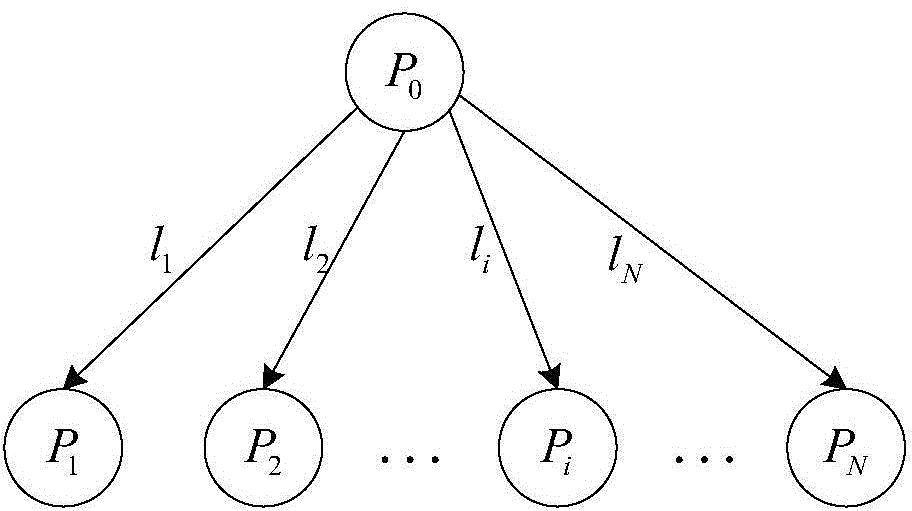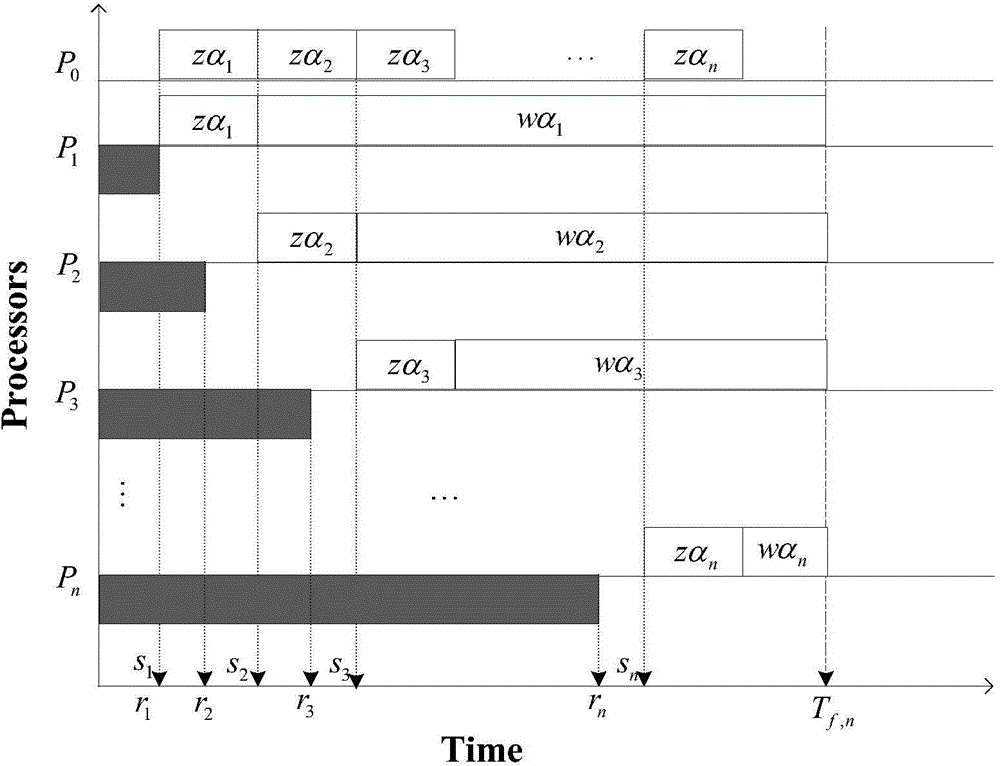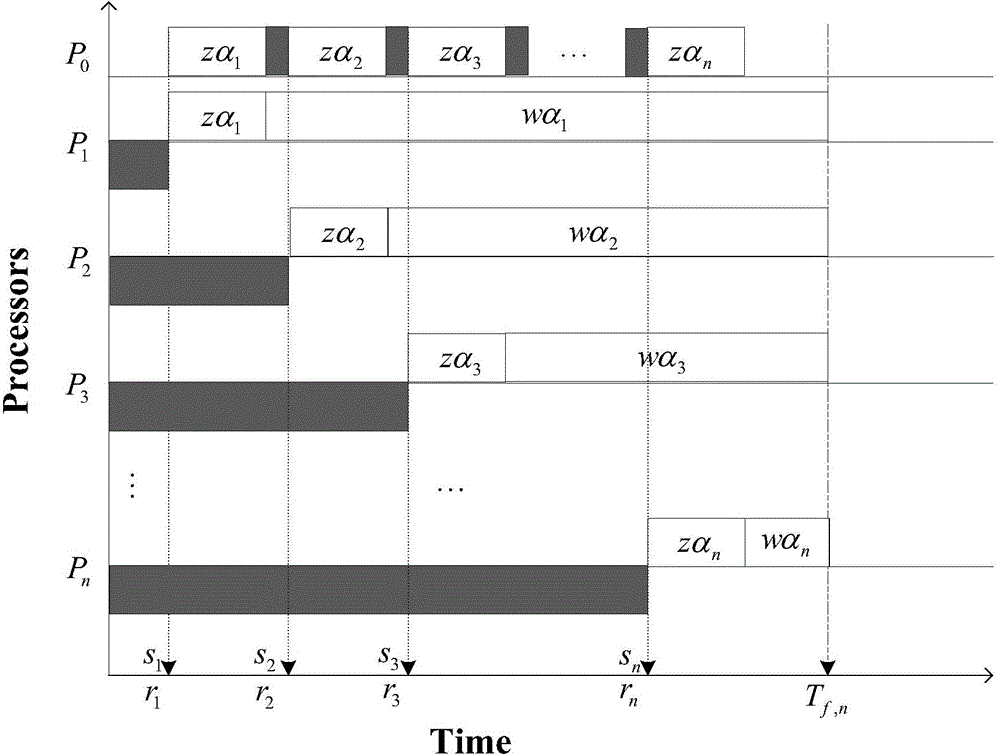Method and system for solving distributable task scheduling model
A scheduling model and task division technology, applied in the information field, can solve problems such as low efficiency and huge time overhead.
- Summary
- Abstract
- Description
- Claims
- Application Information
AI Technical Summary
Problems solved by technology
Method used
Image
Examples
Embodiment 1
[0195] Aiming at the proposed model and algorithm, we conducted several sets of comparative experiments. The experimental parameters are set as follows: the total number of processors N=20, z=0.8, w=1.2. Processor P 1 ~P 20 The release time r 1 ~ r 20 is an exponentially distributed random number. In addition, the following parameters are used in the genetic algorithm: population size PopSize=100, crossover probability p cros =0.6, mutation probability p mut =0.02, the number of retained elites E=5, and the termination condition is evolutionary algebra t=100. Table 1 shows the different tasks (W total =1.0~10.0) The experimental results of the comparison of two algorithms, wherein GA represents the global optimization genetic algorithm proposed by the present invention, and EA represents a commonly used exhaustive algorithm in the prior art.
[0196] Table 1. Experimental results of the comparison of two algorithms under different task loads
[0197]
[0198] The n...
Embodiment 2
[0205] This embodiment provides a system for realizing the solution method of the above-mentioned divisible task scheduling model, including a divisible task scheduling model building module and a divisible task scheduling model solving module connected in sequence;
[0206] The described separable task scheduling model building module is used to realize the following functions:
[0207] Record the total number of slave processors as N, P 0 main processor, {P i |i∈{1,2,...,N}} is the slave processor, slave processor P i The release time of is denoted as r i , from processor P i The start time of is denoted as s i ; Note that the number of slave processors participating in the calculation is n, and the divisible task is divided into n subtasks α 1 ,α 2 ,...,α n , z is the time spent on the link transmission unit task, w is the time required to calculate the unit task from the processor;
[0208] There are three kinds of constraints to be met from the processor release t...
PUM
 Login to View More
Login to View More Abstract
Description
Claims
Application Information
 Login to View More
Login to View More - R&D
- Intellectual Property
- Life Sciences
- Materials
- Tech Scout
- Unparalleled Data Quality
- Higher Quality Content
- 60% Fewer Hallucinations
Browse by: Latest US Patents, China's latest patents, Technical Efficacy Thesaurus, Application Domain, Technology Topic, Popular Technical Reports.
© 2025 PatSnap. All rights reserved.Legal|Privacy policy|Modern Slavery Act Transparency Statement|Sitemap|About US| Contact US: help@patsnap.com



